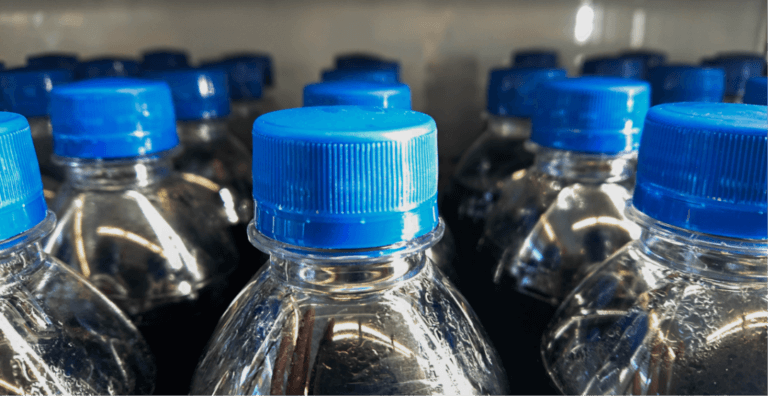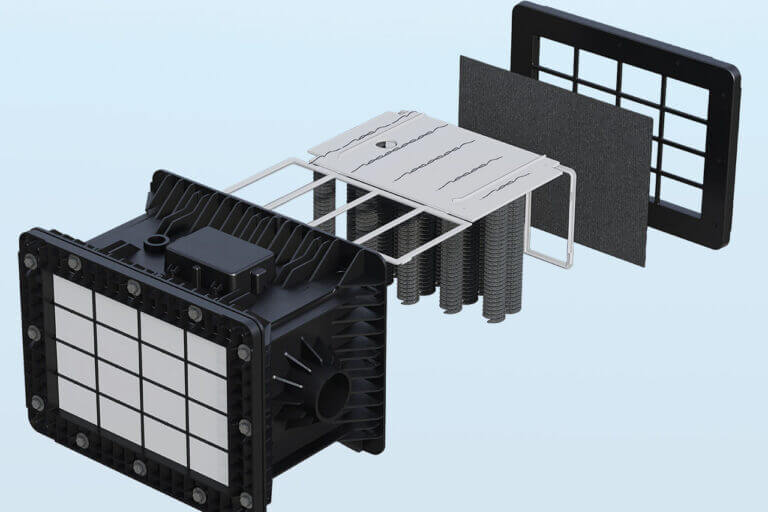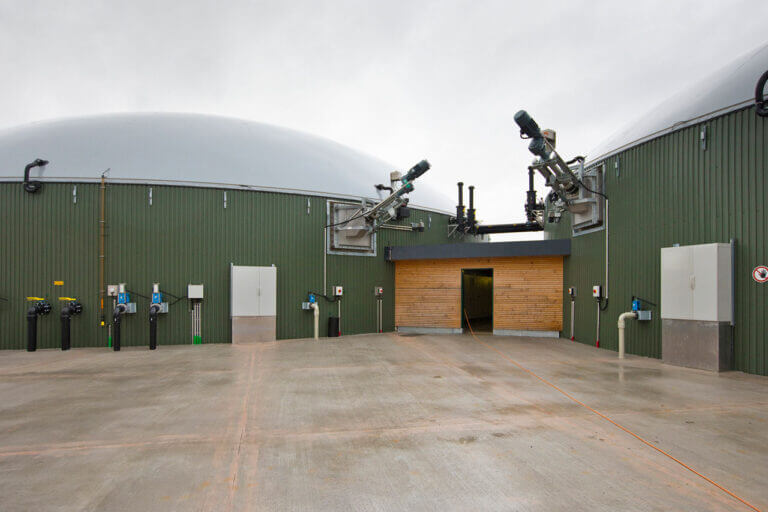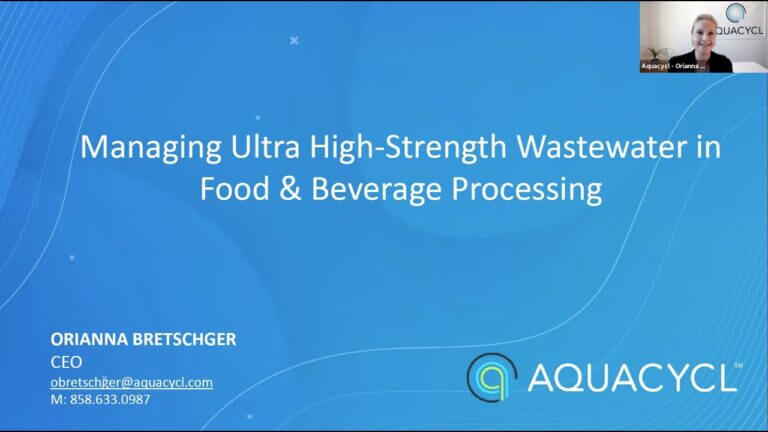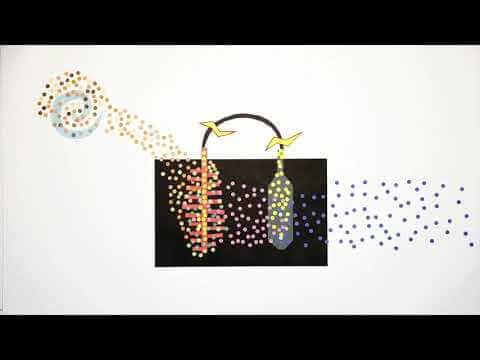Starting the journey to optimizing industrial wastewater treatment processes can feel overwhelming, that’s why we’ve crafted the ultimate checklist tailored to streamline your efforts. This blog will guide you through each step of the optimization process, with a downloadable checklist at the end to use for your facility.
But why bother optimizing your industrial wastewater treatment? While every portion of your production and supply chain may be optimized, the often-forgotten wastewater management portion has one of the highest potentials to improve your bottom line. Completing a full assessment and optimization of your processes could lead to cost savings, risk reduction, sustainability benefits, and overall efficiency improvements for your entire operations.
Though wastewater comes in at the end of production, it impacts all upstream operations. Without optimizing your processes every few years, how can you be sure you’re running an efficient system?
Read to the end of the blog for a checklist you can download to optimize your facility’s industrial wastewater treatment process!
Step 1. Understand Permits and Regulations
The first step on optimizing your industrial wastewater treatment processes is to understand what you are allowed to discharge. There is no point to optimizing your wastewater treatment processes if you’re not aware of the limits you can discharge. When out of compliance, you can face fines, legal action, and production risks.
- Review permits and local regulations: Regulations are different for every country, state, county, and occasionally city. Permits are often unique to each industrial facility and often require updates when changes in production occur. To understand your permits and local regulations, check your city’s government page and check in with your municipality. It’s a good idea to get to know the industrial inspectors in your area.
- Update permits as needed: If changes in production are expected due to expansions, changing product lines, seasonality, etc., then updates to your permit may be needed. Ensure your permits are always up to date so you discharge within compliance. If are discharging directly to the environment and not a sewer (in the USA), Check this NPDES permits site for more information.
- Regularly check for updates or changes in regulations: Regulations are always changing, even though you may be in compliance today, it doesn’t mean you will be tomorrow. The best source for finding these updates is the EPA website or state government website if discharging to the environment through an NPDES permit; or by working with your local city government if discharging to utility sewer. Check in regularly to stay updated on any changes or revisions to regulations that may affect your processes.
- Establish a system for tracking and documenting compliance efforts: Keep records of any changes in permits and current regulations, as well as potential escalating costs. Public utilities openly report rate changes and will often have a multi-year projection based on planned infrastructure investments. This is true for water and sewer services. You can use these projections for planning your overall costs in the present and future.
Step 2. Process Evaluation
After determining your discharge limitations, you will need to assess your current processes to determine any areas for improvement. These will help you optimize your industrial wastewater treatment process for cost.
- Assess wastewater bills: Assessing current wastewater bills will help you gain a picture of how effective your current treatment processes are for treating certain pollutants. Are these bills predictable? Do you experience high surcharges? If you are paying surcharges, there is likely room for improvement. Which pollutants are causing these surcharges? How often is your wastewater tested by the municipality?
- Municipalities will often charge surcharges based on different levels of pollutants, working with them to understand what those are will help you avoid these charges, build a better relationship with them, and help you optimize your system to treat these pollutants more effectively.
- Comprehensive treatment assessment: Now that you understand which pollutants are causing surcharges to your bill, assess your current treatment processes to determine their effectiveness in removing these pollutants. Utilize sensors to measure incoming and discharging wastewater and note which pollutants require further treatment. Check for outdated equipment, leaks, and maintenance needs.
- Identify sources of contamination: Different parts of your production process will produce different pollutants in your wastewater. Measuring pollutants at different steps in your production process will help you gain better control and identify areas for efficiency improvements through flow segregation (see step 3).
- Analyze wastewater data: Gather and analyze data related to the quality and quantity of wastewater entering your treatment system, as well as the performance of each treatment step. Look for trends or anomalies that may indicate areas for improvement or optimization.
Step 3. Efficiency Enhancements
With your process evaluated, you can now get to work on improving efficiency. Efficiency enhancements will streamline operations and reduce costs in wastewater treatment. By implementing strategies to optimize efficiency, you can improve treatment performance while minimizing resource consumption.
- Research advanced treatment technologies and alternative methods: There are many innovative treatment technologies that can treat industrial wastewater more efficiently than conventional technologies. These solutions could also solve other challenges you may face with wastewater management such as space constraint and resource recovery.
- Consider implementing flow segregation to treat the most challenging streams right at the source for further cost savings and efficiency improvements. Here’s a guide on implementing flow segregation.
- Consider digitalization options for optimizing systems: Explore digital solutions such as automation, data analytics, and remote monitoring to optimize wastewater treatment systems. Digitalization can improve process control, enhance predictive maintenance, and provide real-time insights for better decision-making, ultimately increasing efficiency and reducing operational costs. Check out this blog on how digitalization is helping plant managers streamline operations.
- Train staff on best practices for operating and maintaining equipment to maximize efficiency: Provide comprehensive training to staff on proper equipment operation, maintenance procedures, and troubleshooting techniques. Well-trained staff can ensure equipment operates at peak efficiency, identify and address issues promptly, and contribute to overall process optimization efforts.
Step 4. Resource Recovery Opportunities
Incorporating resource recovery into wastewater treatment processes will not only help you achieve sustainability goals but could provide further long-term cost-savings. Resources such as energy, nutrients, and well, water, can all be extracted from wastewater that would otherwise be wasted. This takes your industrial wastewater management one step further by adding circularity to your processes.
- Identify opportunities to incorporate wastewater within your sustainability plans: Consider how wastewater treatment and resource recovery initiatives align with your organization’s sustainability objectives. Utilizing water reuse may help your facility achieve its water efficiency goals. Energy recovery reduces your Scope 2 emissions. Energy and emissions efficient technologies for onsite treatment can reduce your Scope 3 emissions.
- Research options for resource recovery (water, energy, nutrients, etc.): Explore various technologies and methods for recovering valuable resources from wastewater, such as water reuse/recycling, energy generation (e.g., biogas production from anaerobic digestion), and nutrient recovery (e.g., phosphorus and nitrogen extraction).
- Perform a cost-benefit analysis for resource recovery initiatives: Consider factors such as capital investment, operational costs (labor, energy, chemicals, sludge hauling), revenue generation potential, and long-term sustainability benefits. Assessing the financial viability of resource recovery projects can help prioritize investments and maximize returns on investment while minimizing risks.
Step 5. Ongoing Maintenance and Monitoring
Finally, maintaining optimized wastewater treatment processes requires ongoing attention and proactive management. Regular maintenance and monitoring activities are essential to ensure the reliability, efficiency, and compliance of industrial wastewater treatment systems.
- Develop a maintenance schedule for equipment and infrastructure: Create a comprehensive maintenance schedule that outlines routine tasks, inspections, and servicing intervals for all equipment and infrastructure within the wastewater treatment system. Regular preventive maintenance activities will help prevent breakdowns, extend equipment lifespan, and maintain optimal performance.
- Implement regular monitoring and testing protocols: Establish protocols for conducting regular monitoring and testing of wastewater characteristics, treatment performance, and operational parameters. Here’s a handy guide on industrial wastewater monitoring to help you determine the key indicators performance variables to monitor.
- Provide staff training on monitoring and maintenance: Train staff on proper monitoring techniques, maintenance procedures, and troubleshooting protocols to ensure effective operation of wastewater treatment systems. There are great training opportunities through organizations like the Water Environment Federation.
- Maintain detailed records of maintenance, inspections, and performance data: Document equipment servicing, repairs, and replacements, as well as any observed anomalies or trends in system performance. This helps with determining future optimization and reporting. Documentation in digital format will yield a historical operating history that can be utilized to better understand and optimize operational trends in production and treatment.
- Continuously evaluate and adjust treatment based on monitoring data and feedback: Process improvements never end. Use monitoring data and performance feedback to continuously evaluate the effectiveness of wastewater treatment processes and identify opportunities for optimization in real-time.
Things to Keep in Mind
Here are a few things to keep in mind when optimizing industrial wastewater treatment processes:
- Plan for future growth and expanding product lines: Any changes in production will affect the wastewater you produce. Investing in a system that can handle these changes and growing volumes, or increasing concentrations, will help keep your processes optimized.
- Incorporate wastewater into developing sustainability efforts: There are many opportunities to incorporate wastewater in your carbon and water goals, utilize it as a resource in your ESG or CSR planning.
- When aiming for water efficiency, reducing water-use in production impacts the wastewater by lowering discharge volumes but increasing concentrations of pollutants. Make sure to plan appropriately and include wastewater in your holistic water efficiency efforts.
- Stay up to date on evolving treatment methods and technologies: The technology landscape is constantly changing, and innovative systems may bring greater efficiency or solve current challenges in your wastewater processes – without needed to replace any existing equipment.
And to help you avoid common mistakes in your wastewater management, here’s a blog detailing the top 6 common mistakes we’ve seen in industrial wastewater management.
Your Partner in Optimizing Industrial Wastewater Treatment
Optimizing industrial wastewater treatment processes is a complex project with many moving parts. While this checklist serves as a comprehensive guide, it may not encompass every aspect required for fully maximizing your wastewater management potential. So, when taking on a project such as this, consider working with a wastewater treatment partner such as Aquacycl. Our approach begins with a thorough audit of your current processes, including permit compliance, cost analysis, and identification of challenges. From there, we tailor a custom solution designed to address your facility’s specific needs and goals.
Aquacycl’s onsite wastewater treatment is provided as a service with 24/7 remote monitoring and control of your system and continuous flow readings, taking the burden of industrial wastewater management off your hands. The data we collect enables proactive decision-making, helping you optimize operations and mitigate potential risks. Plus, with a 100% compliance guarantee, your facility won’t face surcharges or unpredictable bills again. Schedule a free consultation to learn how Aquacycl can help optimize your industrial wastewater treatment processes.
Download the checklist below
Wastewater Treatment Process Optimization Checklist Download
"*" indicates required fields





